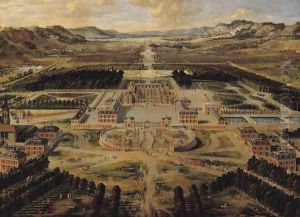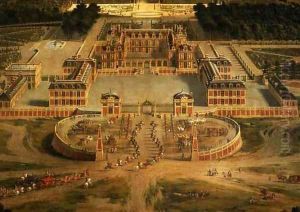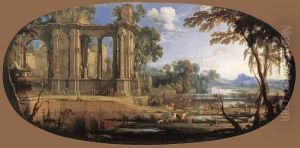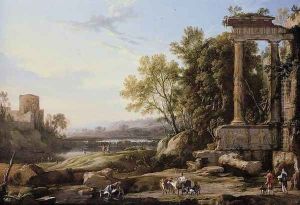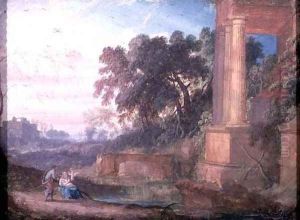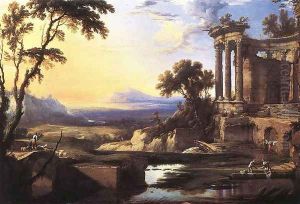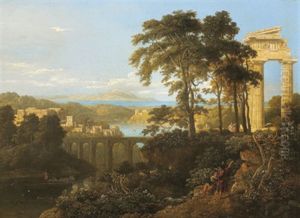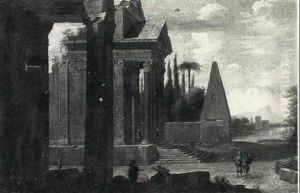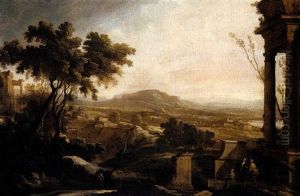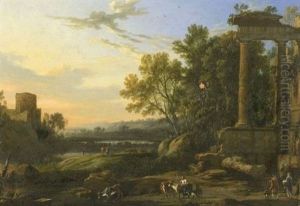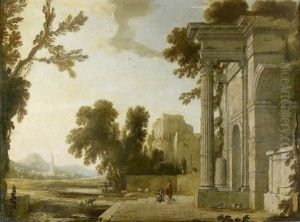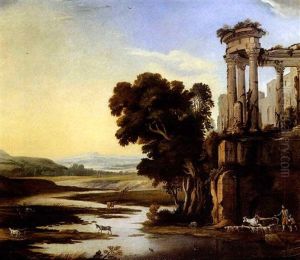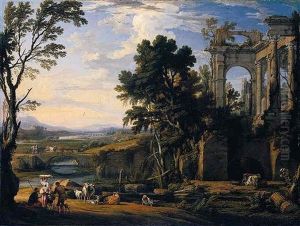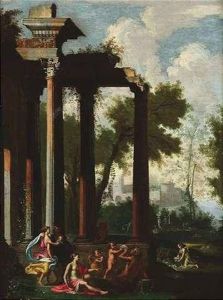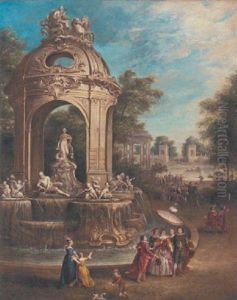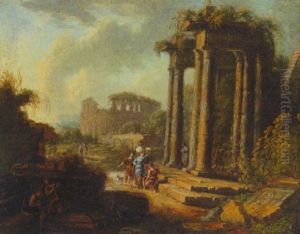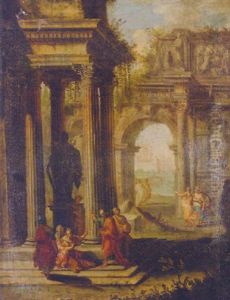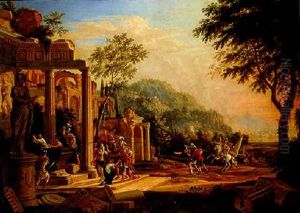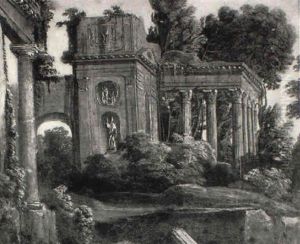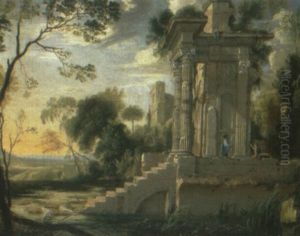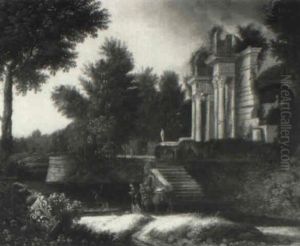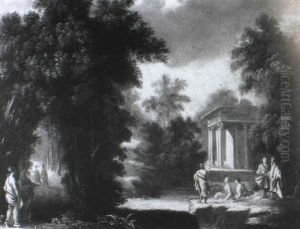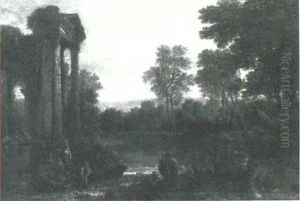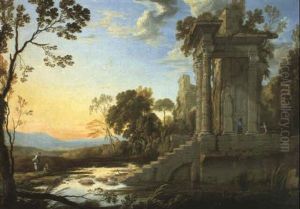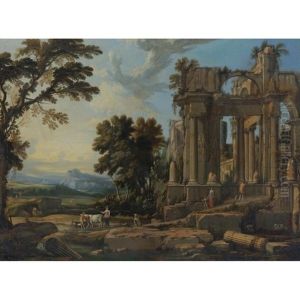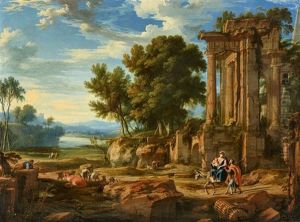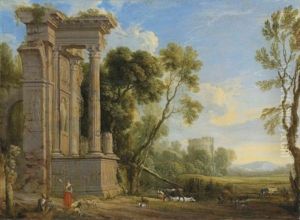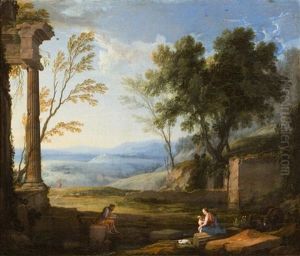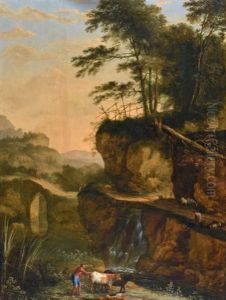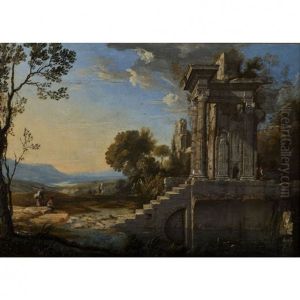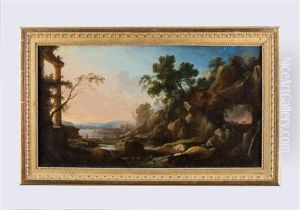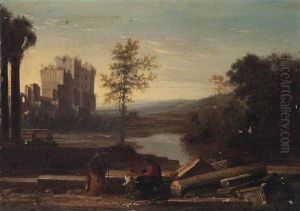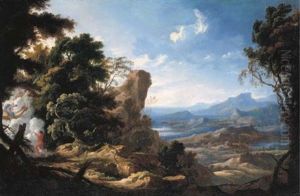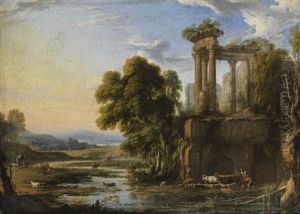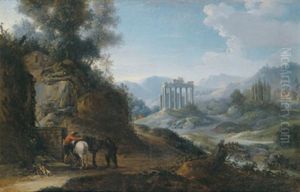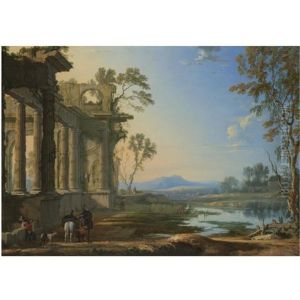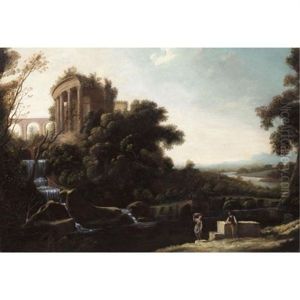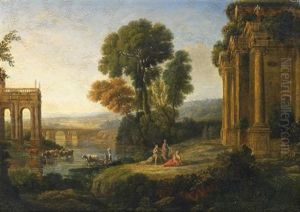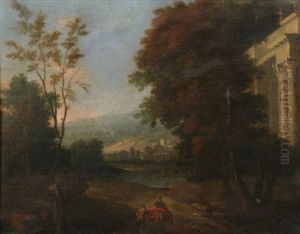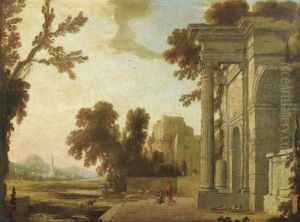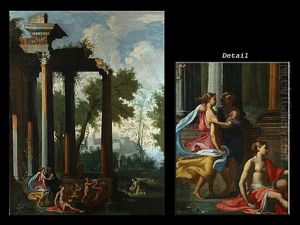Pierre Patel Paintings
Pierre Patel was a French painter born in 1605 in Picardy, France. He is best known for his contribution to the Baroque period, particularly in the realm of landscape painting, a genre that was gaining popularity during his lifetime. Patel's work is characterized by its peaceful, classical landscapes, often infused with a sense of idealism that was typical of the Baroque movement's endeavor to evoke emotion and grandeur. His landscapes were not merely depictions of nature; they were carefully constructed scenes meant to reflect the beauty and harmony of the world, influenced by the classical ideals of ancient Greece and Rome.
Patel's journey into art began in his early years, and by the mid-17th century, he had established himself as a prominent figure in the French art scene. His talent earned him the patronage of the French court, and he became one of the official painters for King Louis XIV. This position allowed him access to a wide array of commissions and further solidified his reputation as a master of landscape painting. Throughout his career, Patel was influenced by the works of other landscape painters of his time, such as Claude Lorrain, whose style is evident in Patel's rendering of light and atmosphere.
In addition to his landscapes, Patel also worked on religious themes and historical events, but these works are less known and have not been as celebrated as his landscapes. His ability to merge the real with the ideal, however, is evident across his oeuvre. Patel's landscapes often featured classical ruins or pastoral scenes with shepherds and their flocks, set against expansive skies that helped to evoke a serene, timeless quality.
Pierre Patel's contributions to French art were significant during his lifetime and continued to be influential after his death in 1676. His work represents a key moment in the evolution of landscape painting, marking a shift towards a more idealized vision of nature that would influence subsequent generations of artists. Despite the passage of centuries, Patel's landscapes retain their ability to evoke a sense of peace and harmony, reflecting the enduring appeal of his vision of the natural world.
